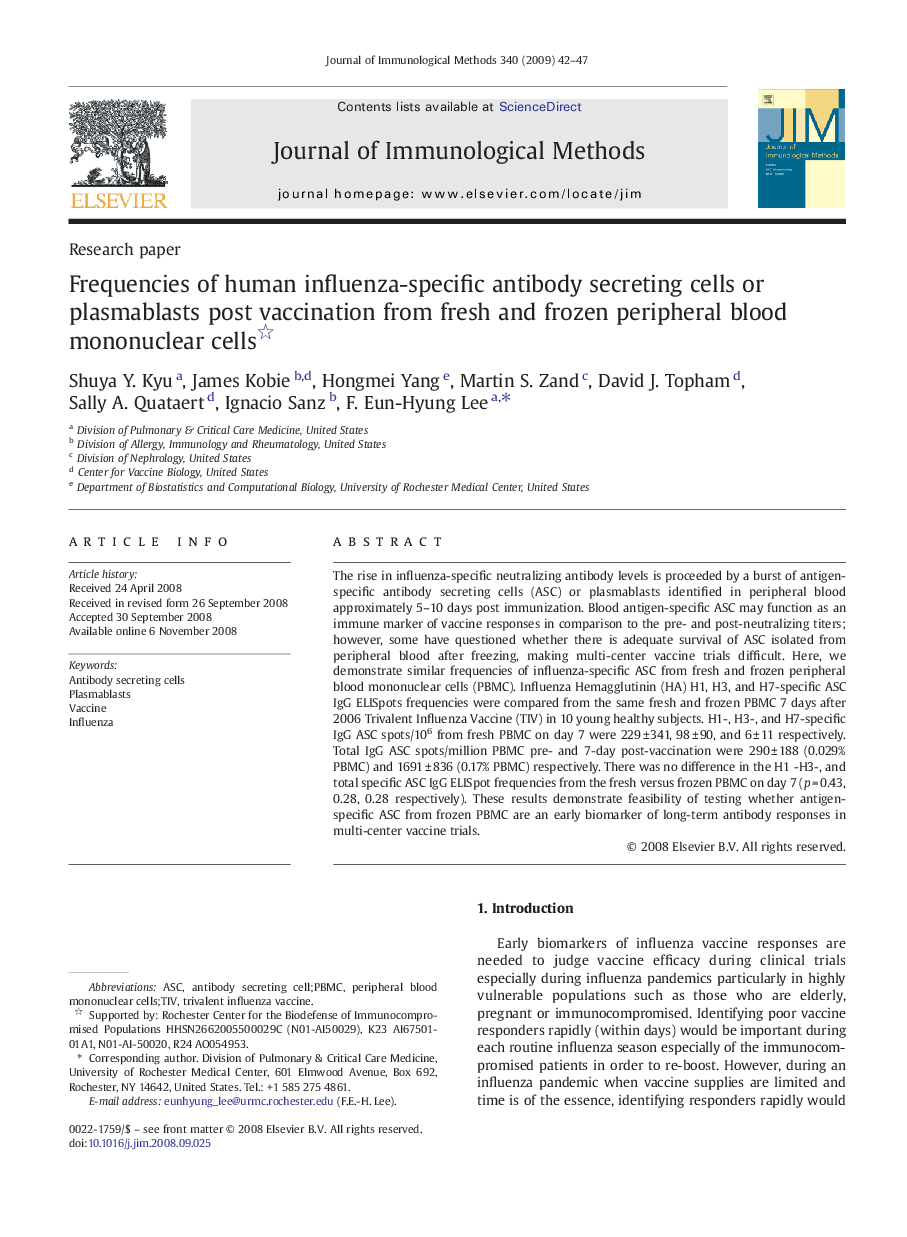| Article ID | Journal | Published Year | Pages | File Type |
|---|---|---|---|---|
| 10889313 | Journal of Immunological Methods | 2009 | 6 Pages |
Abstract
The rise in influenza-specific neutralizing antibody levels is proceeded by a burst of antigen-specific antibody secreting cells (ASC) or plasmablasts identified in peripheral blood approximately 5-10 days post immunization. Blood antigen-specific ASC may function as an immune marker of vaccine responses in comparison to the pre- and post-neutralizing titers; however, some have questioned whether there is adequate survival of ASC isolated from peripheral blood after freezing, making multi-center vaccine trials difficult. Here, we demonstrate similar frequencies of influenza-specific ASC from fresh and frozen peripheral blood mononuclear cells (PBMC). Influenza Hemagglutinin (HA) H1, H3, and H7-specific ASC IgG ELISpots frequencies were compared from the same fresh and frozen PBMC 7 days after 2006 Trivalent Influenza Vaccine (TIV) in 10 young healthy subjects. H1-, H3-, and H7-specific IgG ASC spots/106 from fresh PBMC on day 7 were 229 ± 341, 98 ± 90, and 6 ± 11 respectively. Total IgG ASC spots/million PBMC pre- and 7-day post-vaccination were 290 ± 188 (0.029% PBMC) and 1691 ± 836 (0.17% PBMC) respectively. There was no difference in the H1 -H3-, and total specific ASC IgG ELISpot frequencies from the fresh versus frozen PBMC on day 7 (p = 0.43, 0.28, 0.28 respectively). These results demonstrate feasibility of testing whether antigen-specific ASC from frozen PBMC are an early biomarker of long-term antibody responses in multi-center vaccine trials.
Keywords
Related Topics
Life Sciences
Biochemistry, Genetics and Molecular Biology
Biotechnology
Authors
Shuya Y. Kyu, James Kobie, Hongmei Yang, Martin S. Zand, David J. Topham, Sally A. Quataert, Ignacio Sanz, F. Eun-Hyung Lee,
